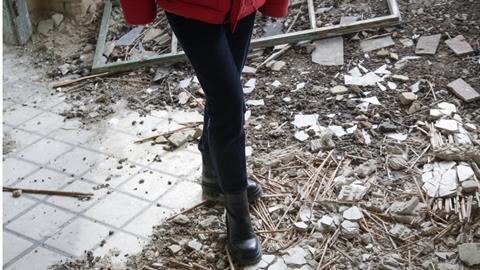The war in Ukraine has altered the note of optimism felt at the end of 2021, according to a major research paper.

In their latest Emerging Trends in Real Estate Global Outlook report, the ULI and PwC said the conflict had taken levels of economic uncertainty even higher and brings expectations of slower global growth and higher, longer-lasting inflation.
‘The note of optimism recorded by ULI and PwC at the end of 2021 is couched in more caution now. The prevailing view in the industry is of moderating economic growth, inflation peaking coming out higher for a longer period and longer lasting supply chain issues.’
Authors of the research said even before news of the invasion of Ukraine, many in the industry were starting to ratchet back expectations for 2022 after the record investment of last year. A new wave of apprehension is expected to hit confidence among consumers, occupiers, and investors, resulting in a slowdown in deal making, especially in Europe.
The industry fears it may have to deal with very swift changes in government spending in favour of defence and energy policies and away from the areas that directly benefit real estate, such as infrastructure and housing.
Managing inflation
Inflation, which was one of the major concerns last year, is an even greater concern today as the war in Ukraine intensifies, at least in Europe and the US, with even more uncertainty this year than last.
‘An elevated level of inflation remains problematic when it comes to development, just at the point when the industry wants to resume pandemic-delayed projects or advance repurposing initiatives. Construction material and labour costs are among the most keenly felt risks for the industry in 2022. Even in Asia Pacific inflation adds to the development challenge, especially related to logistics.’
Sector prospects
Most interviewees responding to the Emerging Trends questionnaire are still clinging to the traditional view of real estate as a good inflation hedge, but they are much more cautious about the risk. However, some operational real estate sectors might profit because many are contra cyclical and more of an inflation hedge than mainstream sectors thanks to the ability to add services and adjust pricing.
In addition, the authors said some investors were thinking more about diversification - spreading risk across sectors and geographies, which may well see already strong capital flows from the West to Asia Pacific gather further momentum.
Logistics remains the main draw for investors, although investment volumes will likely fall in logistics along with the rest of real estate. The challenge for investors lies in balancing what looks like late-cycle pricing with the societal, or non-cyclical, shift to e-commerce.
More capital was deployed in apartments than offices globally for the first time in 2021. This growing attraction of residential has been reflected in Emerging Trends’ North American and European editions over several years.
Investor interest in the residential sector continues unabated in 2022, but so do concerns over affordability. Interviewees suggested the same supply-demand dynamics that have led to the housing affordability issue are, in turn, creating a compelling resiliency from a capital markets perspective. The likes of senior living, student housing and co-living benefit from lower vacancies and attractive risk-adjusted returns compared to commercial assets.
Investing in social housing is increasingly seen by investors as an opportunity to combine a stable income with the “S” in ESG.
Repurposing initiatives have been gathering pace over the past year, but the likelihood is that the momentum here will stall as part of the greater market uncertainty.
Financing decarbonisation
The latest interviews find even greater urgency than a year ago around ESG and the resulting risk of obsolescence or stranded assets. Increased tenant focus on healthy buildings, their brands and their own sustainability targets is accelerating the obsolescence of older buildings.
The report concluded that organisations providing equity and debt have the power to influence the real estate industry’s approach to decarbonisation and social impact. A huge reallocation of capital is already underway towards greening real estate, but there is much more to be done, especially by lenders and regulators if the industry is to meet its targets.
For investors, existing buildings that need capital expenditure to make them more energy efficient, present the biggest challenge, and the biggest opportunity. Some interviewees said there had never been a better moment, while interest rates were low, to spend the money required to decarbonise existing buildings.
Value-add and opportunistic investors with short term horizons could emerge as potential champions of retrofit, even though they are unregulated and less likely to have a defined sustainability strategy. Their approach of “buy it, fix it, sell it” is now likely to include making the building as sustainable as possible.










